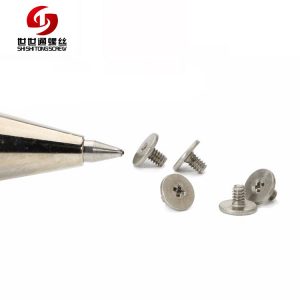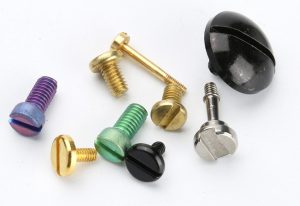Current page:
Home/
News/
What are the materials for small screws? ——Stainless steel, carbon steel
Tel:
+86 13143444311
Email:sst@szsst88.com
Fax:+0086-755-27322278
Address:Building 9, First Industrial Zone, Tantou Industrial City, Songgang Street, Baoan District, Shenzhen 518105, Guangdong, China
Before we were at the exhibition, some customers said that our screws looked like beautiful ornaments and looked like crafts. Especially the small screws are simply unbelievable. Because there are such small M1 screws, and the material and surface treatment are different.

The are made of five kinds of stainless steel, carbon steel, aluminum, titanium and copper. However, two types of stainless steel and carbon steel are commonly used. Followed by copper and titanium, aluminum is rare.

There are many grades of stainless steel, and there are some differences depending on the country. However, when the customer does not specify a brand, our default grade is SUS304. Stainless steel can be divided into:
★200 series – chrome-nickel-manganese, austenitic stainless steel
★300 series – chrome-nickel, austenitic stainless steel, divided into:
301 – good ductility for molding products. It can also be hardened by mechanical processing and has good weldability. Wear resistance and fatigue strength are better than 304 stainless steel.
302 – Corrosion resistance is the same as 304, because the carbon content is relatively high because of the better strength.
303 – generally used for cnc. By adding a small amount of sulfur and phosphorus, it is easier to cut than 304.
304 – is a general model in the production of small screws and other screws.
309 – better temperature resistance than 304.
316 – mainly used in the food industry and surgical equipment, adding molybdenum to obtain a special structure resistant to corrosion. It is also used as “ship steel” because it has better resistance to chloride corrosion than 304.
321 – Other properties are similar to 304 except that the addition of titanium reduces the risk of corrosion of the material.
★400 series – ferritic and martensitic stainless steel.
408 – good heat resistance, weak corrosion resistance, 11% Cr, 8% Ni.
409 – usually used as a car exhaust pipe, belonging to ferritic stainless steel (chrome steel).
410 – Martensite (high-strength chrome steel), good wear resistance and poor corrosion resistance.
416 – The addition of sulfur improves the processing properties of the material.
420 – “Tool grade” martensitic steel, similar to the most grassy stainless steel of Brinell high chromium steel. Also used in surgical knives.
430 – ferritic stainless steel, decorative (car accessories). Has good formability, but the temperature resistance and corrosion resistance are worse.
440 – High strength tool steel with slightly higher carbon content. After proper heat treatment, high yield strength can be obtained, and the hardness can reach 58HRC, which is among the hardest stainless steel.
★ 500 series – heat-resistant chrome alloy steel.
★ 600 series – martensitic precipitation hardening stainless steel.
Commonly used in carbon steel are:
★ 08F – Carbon has a low mass fraction, good plasticity and low strength for stamping parts. Such as the outer casing of cars and instruments.
★ 20—Good plasticity and weldability for parts and carburized parts with low strength requirements. Such as hoods, welding containers, nuts, washers, etc.
★ 45, 40Mn – for mechanical parts with high force. Such as gears, connecting rods, machine tool spindles, etc.
★ 60, 65Mn steel – has a high strength. Used in the manufacture of various springs, machine wheel rims, low speed wheels, etc.
If you need small screws, please contact us: sst@szsst88.com
8 月-27-2018
kalyn

 +86 13143444311
+86 13143444311 sst@szsst88.com
sst@szsst88.com